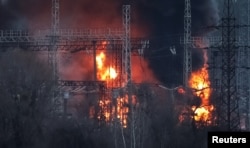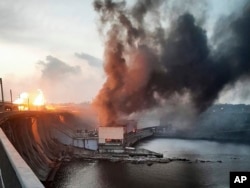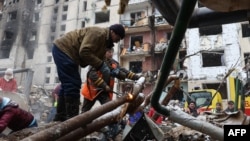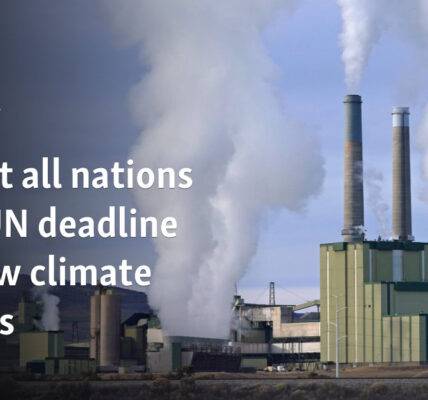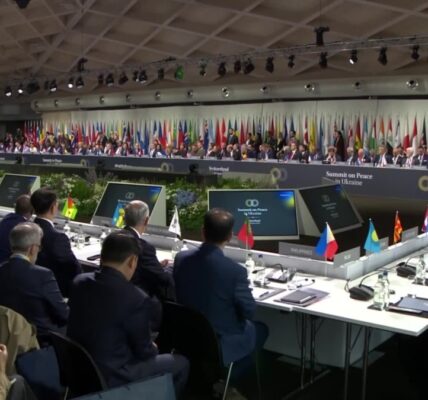On Friday, Russia executed its biggest airstrike of the entire conflict on Ukrainian energy systems, targeting a dam and gas company. The attack resulted in the deaths of at least five individuals and left over 1 million people without power, according to officials in Kyiv.
“I extend my heartfelt sympathies to the families and loved ones of those who lost their lives in this act of terror. Russia’s actions are directly harming the livelihoods of innocent civilians,” stated Ukrainian President Volodymyr Zelenskyy in a message on the messaging platform Telegram.
On Friday, the defense ministry of Russia claimed that the attack was a response to Ukraine’s previous invasions into Russian land during the past few weeks.
In an interview published on Friday, Kremlin representative Dmitry Peskov stated that we are currently facing a state of war, as reported by a pro-Moscow newspaper.
According to a statement from the defense ministry, Russia successfully targeted power grid facilities, ammunition storage areas, railway hubs, and other locations.
According to UkrEnergo’s head Volodymyr Kudrytskyi, Russia carried out the biggest joint strike on Ukraine’s energy system since the start of their full-scale invasion. The grid operator also stated that seven regions in Ukraine experienced power outages.
According to information shared by Presidential Aide Oleksiy Kuleba on Telegram, approximately 700,000 individuals from Kharkiv’s eastern region were among the 1.2 million people in four regions who were left without power.
The massive attack evoked the first winter of the war, when Russia regularly targeted Ukrainian energy infrastructure.
On Friday, Ukraine’s government-owned energy corporation Naftogaz was one of the targets of the attack. The company reported that its facilities sustained damage in the incident.
“Experts are currently addressing the repairs, some facilities have regained electricity, and our team is also repairing damaged gas networks,” stated Naftogaz in the announcement.
Russia launched a massive attack overnight, targeting various locations including Ukraine’s biggest dam – the DniproHES. According to an official, the dam, situated in the south of Zaporizhzhia region, was hit eight times. However, Ukrhidroenergo, the state hydropower company, reassured that there was no danger of a breach.
The defense ministry of Russia announced on Friday that in the same area, their military took over the village of Myrne.
Adrienne Watson, spokesperson for the U.S. National Security Council, denounced Russia’s attack on Ukraine and stressed the importance of promptly providing Ukraine with additional air defense interceptors to defend against these assaults.
Watson emphasized the urgency of the situation, stating that lives are at risk and any more delays are unacceptable. She called on House Republicans to approve the national security supplemental immediately so that essential equipment can be provided to Ukraine. This was in response to their attempts to prevent a significant aid package for Ukraine from being passed.
This report includes contributions from VOA’s Patsy Widakuswara. Additional information has been sourced from Reuters and Agence France-Presse.
Source: voanews.com
